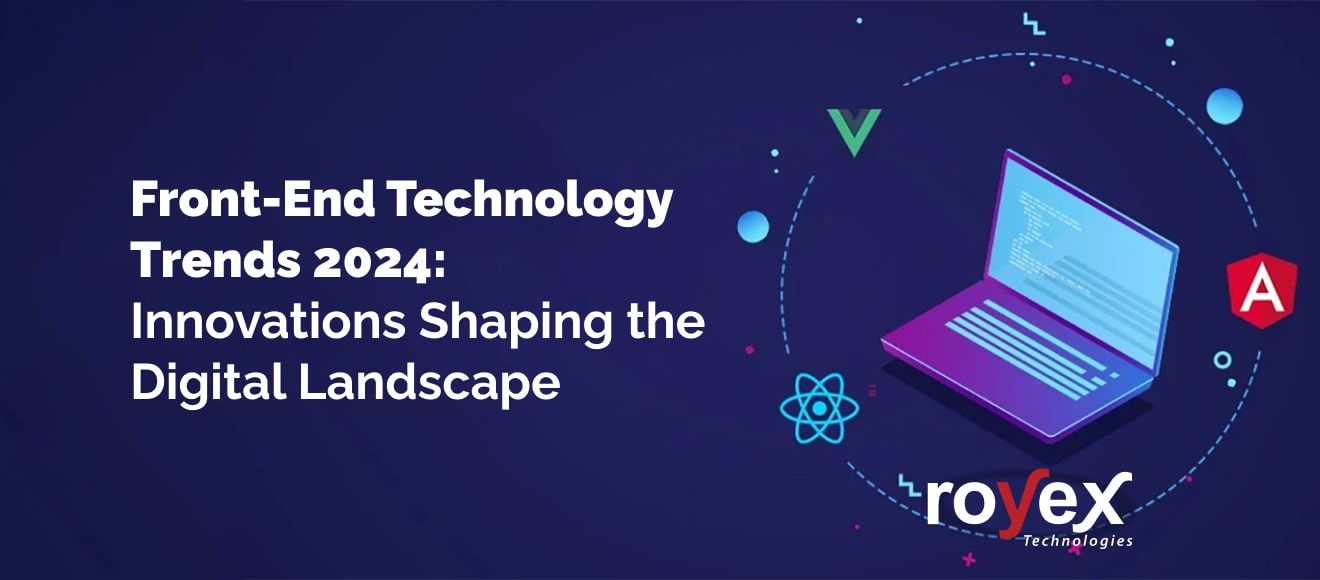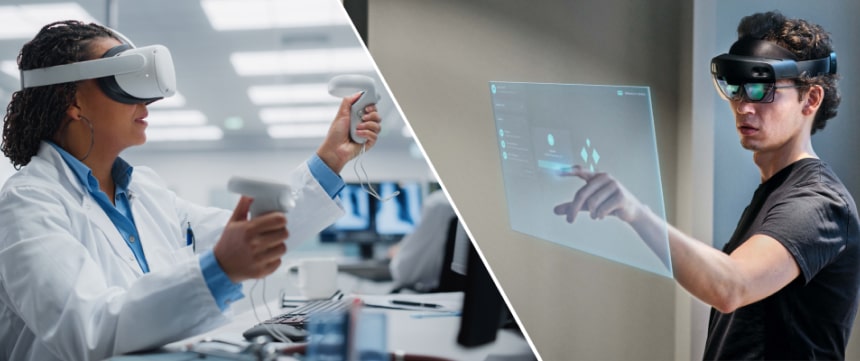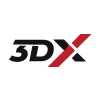
Front-End Technology Trends 2024: Innovations Shaping the Digital Landscape
As we venture into the year 2024, the realm of front-end development finds itself propelled forward by an unprecedented wave of technological innovation and a fundamental shift in user preferences. With each passing day, advancements in technology continue to redefine the boundaries of what is possible, while users increasingly demand seamless, intuitive, and engaging digital experiences. In this article, we embark on a journey to unravel the latest front-end technology trends that are poised to shape the digital landscape in 2024. Additionally, we will delve into how Royex Technologies distinguishes itself from other players in the market and examine the cutting-edge technologies employed by us.
An Overview Of The Front-End Landscape

Front-end development refers to the process of creating the visual and interactive elements of a website or web application that users interact with directly. It involves designing and building the user interface (UI) and user experience (UX) components, including layout, navigation, buttons, forms, and other elements that users see and interact with on a website. Front-end developers use languages such as HTML, CSS, and JavaScript to bring designs to life and make web pages functional and visually appealing. They ensure that websites are responsive, meaning they display correctly on various devices and screen sizes, and they strive to optimize performance and usability to provide a seamless experience for users. In essence, front-end development focuses on creating the "front" or "client-side" of a website or web application that users interact with directly, while back-end development handles the behind-the-scenes functionality and data processing.
On the other hand, front-end technology encompasses the tools, frameworks, and languages used to create the visual and interactive elements of websites or web applications. It encompasses a wide range of technologies and techniques aimed at enhancing the user experience and interface design. At its core, front-end technology revolves around three primary languages: HTML (Hypertext Markup Language), CSS (Cascading Style Sheets), and JavaScript. HTML provides the structure and content of a webpage, CSS dictates the presentation and styling, and JavaScript adds interactivity and functionality. Together, these technologies form the foundation of front-end development, enabling developers to create dynamic, responsive, and user-friendly digital experiences.
Frontend Trends to Look Out For in 2024 And Beyond
Let's jump onto the frontend trends and predictions for 2024 you should watch out.
Progressive Web Apps (PWAs)

Progressive Web Apps (PWAs) have emerged as a favored solution for businesses seeking to bridge the gap between web and native mobile applications, offering users a seamless and immersive experience directly from their browsers. With the ability to provide offline functionality, PWAs ensure that users can access content even in low or no network connectivity environments, thereby overcoming a significant limitation of traditional web applications. Moreover, PWAs boast quick loading times and enhanced performance, enabling users to access content instantly and navigate through the application effortlessly. By harnessing features like push notifications and the ability to add shortcuts to the home screen, PWAs foster increased user engagement and retention. As a result, businesses across various industries are increasingly adopting PWAs as a cost-effective and efficient means of delivering exceptional user experiences and driving user satisfaction and loyalty.
Extended Reality (XR)
As immersive technologies continue to advance at a rapid pace, front-end development is enthusiastically embracing Extended Reality (XR) as a transformative tool in the digital landscape. XR encompasses a spectrum of immersive experiences, including Augmented Reality (AR) and Virtual Reality (VR), which are revolutionizing interactions across diverse sectors such as e-commerce, education, and healthcare. In e-commerce, XR enables customers to visualize products in their physical environment before making a purchase, enhancing the online shopping experience and reducing return rates. In education, XR brings learning materials to life, allowing students to engage with complex concepts through interactive simulations and virtual field trips. Similarly, in healthcare, XR facilitates training simulations for medical professionals and offers immersive therapies for patients, demonstrating the versatility and potential of XR in creating interactive and engaging user interfaces that transcend traditional boundaries.
Voice User Interface (VUI)
As the prevalence of smart devices and virtual assistants continues to soar, the importance of Voice User Interface (VUI) in the realm of front-end development is becoming more pronounced. The integration of voice commands and responses into web applications represents a pivotal shift in how users interact with digital platforms, offering heightened accessibility and convenience. By incorporating VUI, web applications can cater to a broader audience, including individuals with disabilities or those who prefer hands-free interaction. Moreover, VUI enhances user engagement by providing a more natural and intuitive means of interaction, allowing users to perform tasks and access information effortlessly through voice commands. As a result, VUI is poised to play a crucial role in shaping the future of front-end development, revolutionizing the way users engage with digital interfaces and expanding accessibility to a wider range of users.
Motion UI
Motion UI is a dynamic approach to front-end development that revolves around the integration of animations and transitions to elevate the visual appeal and user experience of a website or application. By incorporating micro-interactions, subtle animations, and dynamic transitions, Motion UI breathes life into static interfaces, adding depth and interactivity that captivates users. These animations not only enhance the aesthetic appeal of the interface but also serve functional purposes, such as guiding users through navigation, providing feedback on interactions, and conveying information in a visually engaging manner. Whether it's a smoothly animated button hover effect, a playful loading animation, or a fluid transition between content sections, Motion UI enables developers to create immersive and user-friendly interfaces that delight and engage users. As a result, Motion UI has emerged as a powerful tool in front-end development, allowing designers and developers to infuse personality and dynamism into digital experiences, ultimately enhancing user satisfaction and retention.
Augmented Reality (AR) and Virtual Reality (VR)

Augmented Reality (AR) and Virtual Reality (VR) technologies have swiftly made their mark on the landscape of web development, ushering in a new era of immersive and interactive experiences for users. This burgeoning trend is gaining significant traction, especially in sectors such as e-commerce and education, where the potential for transformative applications is particularly compelling. In e-commerce, AR and VR empower users to go beyond traditional product images and descriptions by providing immersive experiences that allow them to visualize products in their real-world environments before making a purchase. This enables consumers to make more informed decisions and enhances their confidence in the products they choose. Similarly, in the education sector, AR and VR open up exciting possibilities for immersive learning experiences, allowing students to explore virtual environments, conduct experiments, and engage with complex concepts in ways that transcend traditional classroom boundaries. These technologies offer a dynamic and engaging approach to learning that captivates students' attention and fosters deeper understanding and retention of information. As AR and VR technologies continue to evolve and become more accessible, their integration into web development is poised to revolutionize the way users interact with digital content, creating opportunities for richer, more engaging experiences across various sectors.
JAMstack Architecture
JAMstack Architecture, a revolutionary approach to web development, is gaining rapid momentum due to its ability to deliver highly performant and scalable web applications. At its core, JAMstack emphasizes three key components: JavaScript, APIs, and Markup. This architecture decouples the front end from the back end, resulting in several significant advantages. Firstly, by pre-rendering markup at build time and serving it directly to the client, JAMstack significantly reduces page load times, leading to a smoother and more responsive user experience. Additionally, JAMstack leverages APIs to fetch dynamic data at runtime, ensuring that content remains fresh and up-to-date without sacrificing performance. Furthermore, by offloading server-side processes to third-party services or microservices, JAMstack enhances scalability and resilience, allowing web applications to handle increased traffic and scale effortlessly. Moreover, the static nature of JAMstack sites inherently improves security, as there are fewer attack vectors compared to traditional server-rendered applications. With its focus on performance, scalability, and security, JAMstack Architecture represents a paradigm shift in web development, offering developers a powerful framework to create fast, reliable, and secure web applications.
Continued Dominance of JavaScript
JavaScript's continued dominance in the realm of front-end development is undeniable, solidifying its position as the cornerstone of web development. As we progress into 2024, JavaScript's reign as the most commonly-used programming language shows no signs of waning. Its versatility and ubiquity make it an indispensable tool for developers seeking to build dynamic and interactive user experiences across a multitude of platforms and devices. With the advent of powerful frameworks such as React.js and Vue.js, JavaScript has evolved to meet the ever-evolving demands of modern users. These frameworks provide developers with the tools and capabilities to create scalable and maintainable web applications, allowing for seamless integration of complex features and functionalities. Whether it's building a responsive user interface or implementing sophisticated data handling logic, JavaScript remains the go-to language for developers looking to push the boundaries of web development in 2024 and beyond.
Benefits of Front-End Technology

-
Enhanced User Experience: Front-end technology enables developers to create intuitive and visually appealing user interfaces (UIs) and user experiences (UX). By leveraging technologies like HTML, CSS, and JavaScript, developers can design responsive and interactive interfaces that engage users and facilitate seamless navigation, ultimately enhancing user satisfaction and retention.
-
Improved Accessibility: Front-end technology plays a crucial role in ensuring that digital platforms are accessible to users of all abilities. Through the use of semantic HTML, ARIA (Accessible Rich Internet Applications) attributes, and responsive design techniques, developers can create websites and applications that are compatible with assistive technologies and adhere to accessibility standards, making them accessible to individuals with disabilities.
-
Cross-Platform Compatibility: Front-end technologies allow developers to build web applications that are compatible with a wide range of devices and browsers. By adopting responsive design principles and utilizing techniques like progressive enhancement and graceful degradation, developers can ensure that their applications function consistently across different platforms, screen sizes, and devices, providing a seamless user experience regardless of the user's chosen device or browser.
-
Faster Development and Iteration: Front-end frameworks, libraries, and tools streamline the development process and enable rapid prototyping and iteration. Frameworks like React.js, Angular, and Vue.js provide developers with reusable components and efficient development workflows, reducing development time and enabling faster iteration. Additionally, tools like CSS preprocessors (e.g., Sass, Less) and task runners (e.g., Gulp, Grunt) automate repetitive tasks and optimize code, further speeding up the development process.
-
Performance Optimization: Front-end technology empowers developers to optimize the performance of web applications, ensuring fast load times and smooth user interactions. Techniques such as code splitting, lazy loading, and image optimization help reduce page load times and improve overall performance. Moreover, front-end frameworks and libraries are continuously evolving to prioritize performance and efficiency, enabling developers to create high-performing web applications that deliver an exceptional user experience.
Royex Technologies' Distinctive Approach
Royex Technologies stands out in the competitive landscape of front-end development with its customer-centric approach and commitment to innovation. Here are some key factors that set Royex apart:
-
Client-Centric Solutions: Royex Technologies prioritizes understanding the unique needs and goals of its clients. Our development process revolves around crafting tailored solutions that address specific business requirements, ensuring client satisfaction and success.
-
Emphasis on User Experience: We place a strong emphasis on creating intuitive and visually appealing user interfaces. The team at Royex is dedicated to enhancing the overall user experience through thoughtful design, responsive layouts, and user-friendly navigation.
-
Agile Development Methodology: Royex adopts an agile development methodology, allowing for flexibility and adaptability in response to evolving project requirements. This approach ensures efficient collaboration, quick iterations, and the delivery of high-quality solutions within specified timelines.
Technologies Used by Royex Technologies
React.js
Royex leverages ReactJS, a popular JavaScript library, for building dynamic and interactive user interfaces. React's component-based architecture facilitates modular development and efficient updates, enhancing overall application performance.
Angular.js
Angular, a comprehensive front-end framework, is employed by us for developing robust and scalable single-page applications. Its modular structure, dependency injection, and two-way data binding contribute to the creation of complex, feature-rich web applications.
Vue.js
Vue.js is another front-end technology embraced by us, known for its simplicity and flexibility. It allows for the creation of reactive and dynamic interfaces, making it a suitable choice for a variety of web development projects.
HTML5
We utilize the latest HTML5 standards to craft modern and interactive web experiences, ensuring compatibility across various devices and browsers while incorporating rich multimedia content seamlessly.
JavaScript
Leveraging the power of JavaScript, we create dynamic and responsive web applications, implementing advanced functionalities and interactive features to enhance user engagement and interactivity.
CSS
With expertise in CSS, Royex designs visually stunning and aesthetically pleasing user interfaces, employing CSS frameworks and techniques to achieve pixel-perfect layouts and responsive designs across different screen sizes.
Flutter
We harness Flutter's cross-platform capabilities to develop high-performance mobile applications with a native-like user experience, enabling efficient code sharing and rapid development cycles for Android and iOS platforms.
Next.js
By leveraging Next.js, we build robust and scalable web applications with server-side rendering capabilities, optimizing performance and enhancing SEO while simplifying the development process with its intuitive framework and tooling.
Conclusion
Innovations in front-end technology are set to reshape the digital landscape in 2024, offering exciting opportunities for developers to create impactful and immersive digital experiences. From the integration of AI and chatbots to the evolution of JAMstack architecture and the continued dominance of JavaScript, these trends highlight the dynamic nature of front-end development. As we embrace these innovations and navigate the evolving tech landscape, it's clear that the future holds boundless possibilities for creating compelling and user-friendly digital experiences. By staying informed and adapting to these trends, developers can stay ahead of the curve and drive the next wave of innovation in front-end development.
Check our portfolio to see our previous works. Contact us via email at info@royex.net or call us at +971566027916. To get started with us.




